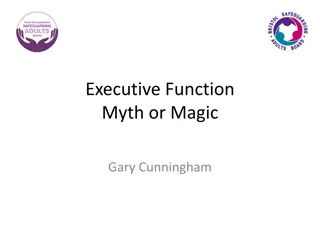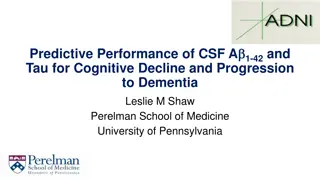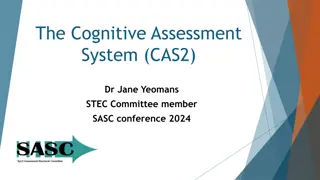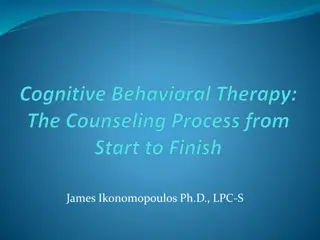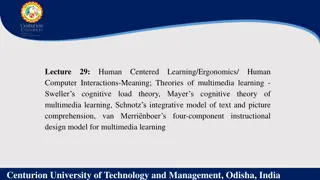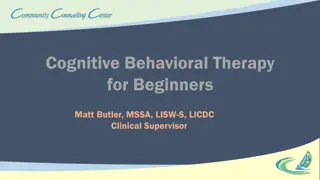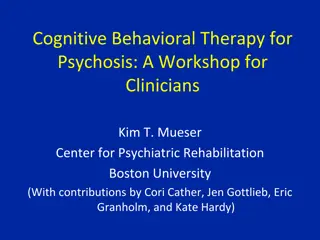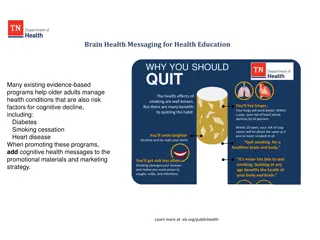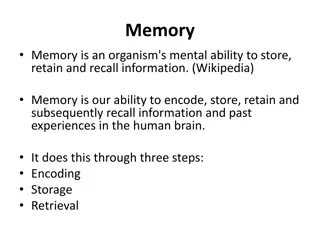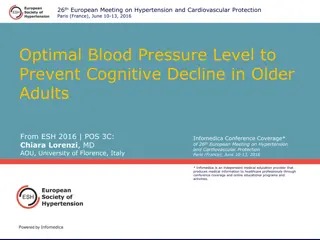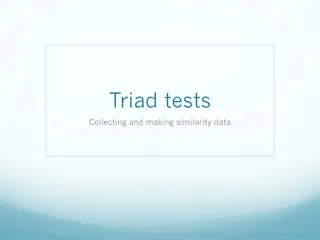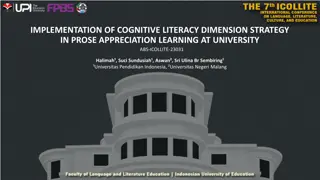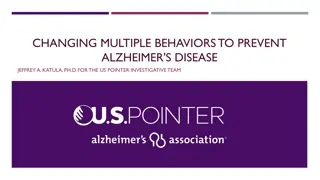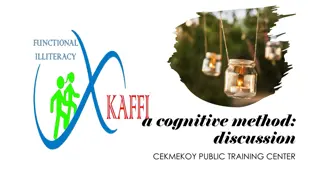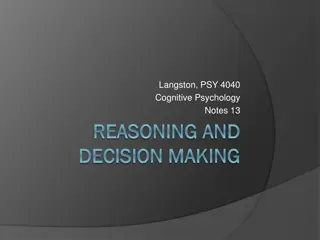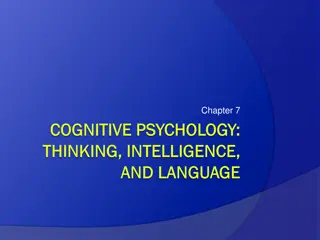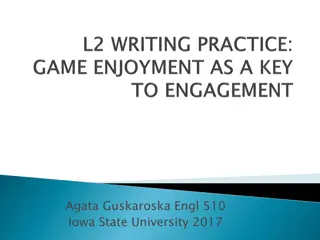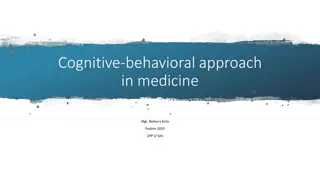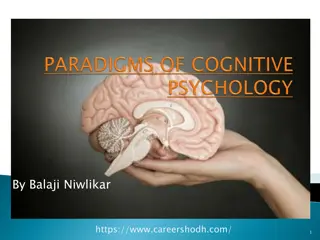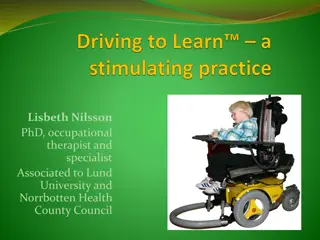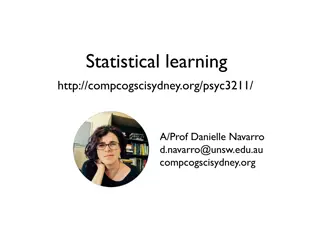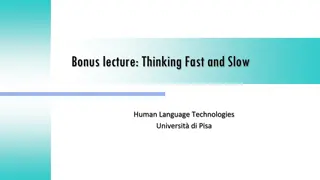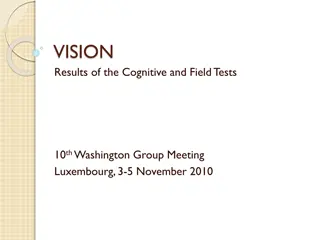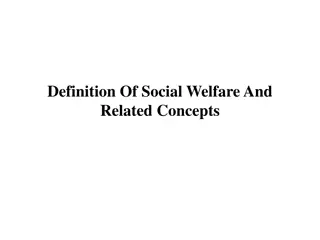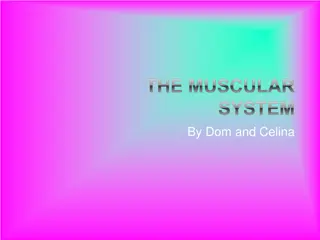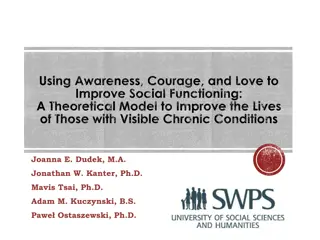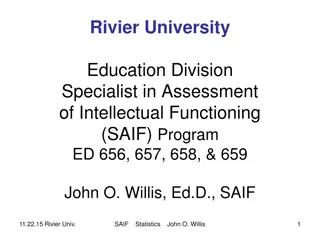Understanding America Study: Cognitive Functioning Measures
The Understanding America Study (UAS) focuses on developing web-based cognitive functioning measures, including tests for fluid abilities, verbal skills, executive function, and processing speed. Utilizing data from about 9,000 panelists, tests like the Stop and Go Switch task are administered online to infer cognitive functioning. Early tests added in 2016 are calibrated using Item Response Theory, providing valuable insights into age-sensitive cognitive abilities. The UAS offers freely available data for research purposes.
Download Presentation

Please find below an Image/Link to download the presentation.
The content on the website is provided AS IS for your information and personal use only. It may not be sold, licensed, or shared on other websites without obtaining consent from the author. Download presentation by click this link. If you encounter any issues during the download, it is possible that the publisher has removed the file from their server.
E N D
Presentation Transcript
Developing web-based cognitive functioning measures in the Understanding America Study Arie Kapteyn, Jill Darling, Margaret Gatz, Bart Orriens, Erik Meijer, Ying Liu, Tania Gutsche Presenter: Stefan Schneider
The Understanding America Study (UAS) Steadily growing online probability sample Started in 2014 Currently about 9,000 panelists Complete about 1 survey/month Data freely available at https://uasdata.usc.edu/
Cognitive functioning tests in the UAS Fluid abilities/reasoning, verbal skills (verbal analogies, number series, picture vocabulary) Executive function (Stop and Go switching) Processing speed (Figure Identification) From Telephone Interview for Cognitive Status (TICS): Episodic memory (Word recall) Working memory/mental processing (serial 7s) Mental status (object naming, recall of today s date, naming president and vice president) Use of paradata to infer cognitive functioning
Early tests: added in 2016 From CogUSA Administered every 2 years in UAS Verbal analogies Summer is to Winter as Heat is to ___ Number series 4 6 __ 10 Picture vocabulary: verbal skills (name what is shown in the pictures)
Early tests Calibrated using Item Response Theory (IRT) normed to the general US population 2 psychometrically equivalent parallel short forms per test, 15 items each Number Series - Test Information Function 10 8 Information .8 reliability 6 4 2 0 -4 -2 0 2 4 Theta
Age-sensitive cognitive tests Stop and Go Switch task Originally developed as part of the BTACT, telephone-administered Programmed in the UAS for devices with (a) keyboards and (b) touchscreens
Executive functioning: Stop and Go Switch task The respondent sees the word RED or GREEN and presses [S] for stop or [G] for go .
Executive functioning: Stop and Go Switch task Baseline condition (10 Trials) RED = STOP, GREEN = GO Reverse baseline condition (10 Trials) RED = GO, GREEN = STOP Alternating condition(30 trials) If Normal displayed: RED = STOP, GREEN = GO If Reverse displayed: RED = GO, GREEN = STOP
Executive functioning: Stop and Go Switch task Are the response times different when using A) a computer with keyboard versus B) a device with a touchscreen? Randomized experiment Participants do the task twice, using a device with keyboard vs. touchscreen, in randomized order
Executive functioning: Stop and Go Switch task Initial tests showed pronounced mode effects Several iterations Multiple practice trials Exact instructions about how to position fingers during task Minimize number of buttons needed: only keys needed are S (left index finger), G (right index finger) and space bar (thumb). Make sure that no scrolling is necessary regardless of screen size
Executive functioning: Stop and Go Switch task Results before vs. after refinements: Mode differences (Touchpad vs Keyboard) diminished after refinements Response latencies (in milliseconds) Before refinements After refinements Keyboard Touchpad Keyboard Touchpad Diff Diff 95 118 78 89 Baseline condition +23 +11 103 119 93 97 Reverse baseline condition +16 +4 82 100 76 81 Alternating - Nonswitch +18 +5 141 156 120 129 Alternating Switch +15 +9
Age-sensitive cognitive tests Processing speed: Figure Identification task Originally developed for paper & pencil administration in the Dureman & S lde battery Programmed for keyboard and touchpad administration in the UAS
Processing speed: Figure identification task Major goals: 1) Compare keyboard vs. touchpad response times 2) Create norms and parallel short forms Within-subject randomized experiment Participants complete all 60 items twice (keyboard vs. touchscreen), in randomized order
Processing speed: Figure identification task Training effect Fatigue effect 60 items, round #1 60 items, round #2
Developing cognitive categories to classify dementia status in the UAS
Cognitive classification UAS administers components of the TICS (Telephone Interview for Cognitive Status) from HRS every two years HRS uses cutoffs to categorize respondents as: A. Cognitively normal B. Cognitively impaired not demented (CIND) C. Demented Not a clinical diagnosis, but classification very useful for research with large samples
Cognitive classification Goal: develop a classification system using categories and cutoffs based on those in the HRS Barrier: HRS classification is based on telephone or in person interviews
Approach Create a cross-walk between the HRS dementia categories and the UAS cognitive battery: Administer tests used for Langa-Weir categorization (episodic memory, serial 7s, backward counting) via telephone AND Administer UAS cognitive battery within 1 month (order randomized)
Deliverables Cognitive cutoffs in the UAS The resulting classification can be applied to other Internet studies using TICS items. Better understanding of mode effects: extent to which shifts to Internet administration impacts classification schemes of cognitive status
Use of paradata as indicators of cognitive functioning
Why look at paradata? Paradata are stored alongside each survey response in the UAS. Completing surveys is a cognitively demanding task: involves information processing, comprehension, searching memory for relevant information, decision making, etc. Hope is that paradata could capture cognitive inefficiencies to some extent Could be useful to detect changes in cognitive functioning as a participant completes surveys over the years
Paradata 5-year NIA-funded project Major goals: Which combination of paradata indicators best predicts cognitive status? Can paradata indicators be a useful early marker of mild cognitive impairment and dementia?
UAS pilot analysis Focus on response times: average time participant spent on a screen when completing surveys Are response times in early surveys (2014-2015) prospectively associated with: (a) cognitive functioning status in 2016 (b) decline in cognitive functioning from 2016 to 2018?





